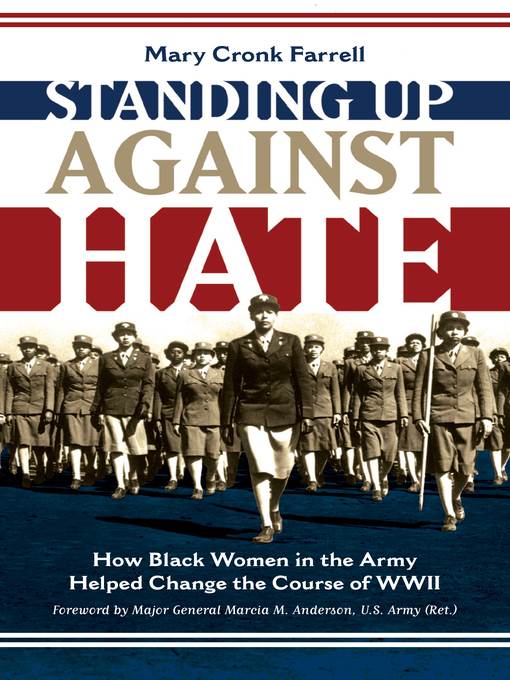
Standing Up Against Hate
How Black Women in the Army Helped Change the Course of WWII
فرمت کتاب
ebook
تاریخ انتشار
2019
Lexile Score
1120
Reading Level
6-9
ATOS
7.7
Interest Level
4-8(MG)
نویسنده
Mary Cronk Farrellناشر
ABRAMSشابک
9781683353669
کتاب های مرتبط
- اطلاعات
- نقد و بررسی
- دیدگاه کاربران
نقد و بررسی

October 15, 2018
African-American women fought for freedom at home and abroad as they served their country during World War II.When the United States Army found itself in need of personnel who could do work that would free men to report to combat, it established first the Women's Auxiliary Army Corps and then the Women's Army Corps. Black leaders were already encouraging more wartime opportunities for African-Americans and sought to use this innovation to help end segregation. Civil rights activist Dr. Mary McLeod Bethune pushed for integration of the corps, but the country's official "separate but equal" policy stood, although a quota of black women received officer's training. The women who responded to the call were well familiar with the racial mores of the times, but the insults they endured hurt. Nevertheless, they worked and trained hard and put forth every effort to succeed, sometimes risking court martial for standing up for themselves. When they were called for overseas duty, the 6888th Central Postal Battalion performed their duties so well in Birmingham, England, that they went on to another assignment in France. Importantly, Farrell brings in the voices of the women, which provides clarity and understanding of what they experienced. She also highlights the role of black newspapers in keeping the community informed about the difficulties they often faced. The text is richly supported with archival photographs. The importance of this story is amplified by the inspiring forward by Maj. Gen. Marcia M. Anderson, Army (Ret.), who makes a direct link between the determined struggles of those described and the achievements of African-American women in today's U.S. military.The stories in this valuable volume are well worth knowing. (author's note, glossary, timeline, source notes, bibliography; index and forward not seen) (Nonfiction. 10-14)
COPYRIGHT(2018) Kirkus Reviews, ALL RIGHTS RESERVED.

December 15, 2018
Grades 5-8 Throughout history, women have often faced limited futures. Before WWII, most women were encouraged to get married and have children. Often, educated women were allowed careers only as teachers; for black women, teaching in underfunded segregated schools was a bleak, monotonous future. With war came opportunity: though they would not make rank or receive equal pay, women were encouraged to join the military, and they began bringing about a change in perception as to what women were capable of achieving. The Women's Army Auxiliary Corps was begun to help usher in this new change, though, unfortunately, it brought about more problems?segregation and racism ran rampant among the officers and enlisted. Still, black women enlisted by the droves, leaving their children with relatives in order to build them a better future. Extensive back matter, which includes a time line and notes on the primary sources used, will help guide readers as they explore how black women took advantage of these opportunities to help drive integration forward. An adventurous ride through the history of black women pioneers.(Reprinted with permission of Booklist, copyright 2018, American Library Association.)

























دیدگاه کاربران